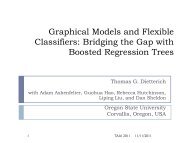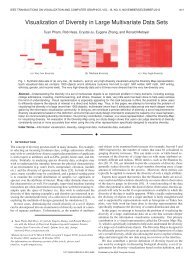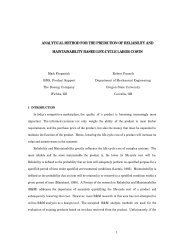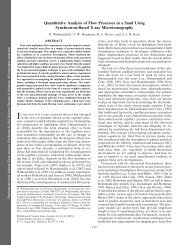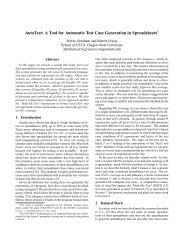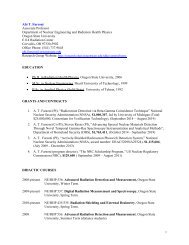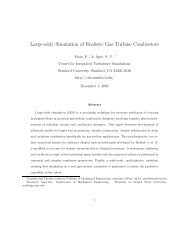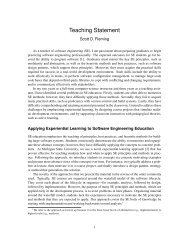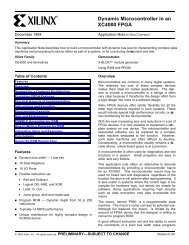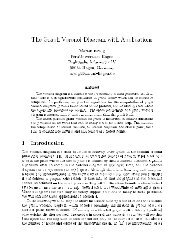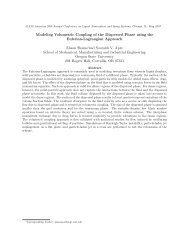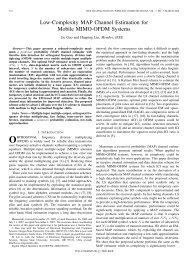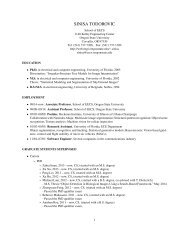DNS of Low Reynolds Number Flow Dynamics of a Thin Airfoil with ...
DNS of Low Reynolds Number Flow Dynamics of a Thin Airfoil with ...
DNS of Low Reynolds Number Flow Dynamics of a Thin Airfoil with ...
- No tags were found...
You also want an ePaper? Increase the reach of your titles
YUMPU automatically turns print PDFs into web optimized ePapers that Google loves.
2 Methodology:The computational algorithm for flow over immersed objects on simple Cartesian grids is based on a fictitiousdomain approach [22, 19, 23]. In this approach, the entire fluid-rigid body domain is assumed to be anincompressible, but variable density, fluid. The flow inside the fluid region is constrained to be divergencefreefor an incompressible fluid, whereas the flow inside the particle (or rigid body) domain is constrainedto undergo rigid body motion (i.e. involving translation and rotational motions only). For specified motion<strong>of</strong> the rigid body, the rigidity constraint force can be readily obtained once the location <strong>of</strong> the boundary <strong>of</strong>the rigid body is identified by making use <strong>of</strong> marker points in a banded region surrounding the rigid bodysurface (figure 2).The marker points provide subgrid scale resolution, improving theaccuracy <strong>of</strong> interpolations between the marker points and the backgroundgrid. Due to rigidity <strong>of</strong> the moving object, there is no relative motionbetween the marker points, and all points move <strong>with</strong> the same, specifiedvelocity field. The rigidity constaint force is then enforced explicitly ina standard fractional step scheme. The flow solver is fully parallel andbased on conservative finite volume scheme [25] for accurate prediction <strong>of</strong>turbulent flows and has been verified on a variety <strong>of</strong> canonical test casessuch as flow over a cylinder, sphere and a NACA airfoil to show goodpredictive capability.3 Results:Computational studies involving verification tests on a SD7003 plungingFigure 2: Use <strong>of</strong> banded markerpoints to identify the rigid bodysurface in a fictitious-domain approach[24, 19].airfoil and parametric studies <strong>of</strong> leading edge actuation for a thin, flat airfoil are presented below.3.1 Verification TestsThe fictitious-domain approach was used to simulate flow over a plungingSD7003 airfoil, corresponding to the high-fildeity simulations by Visbal[20, 21].This configuration has also been a subject <strong>of</strong> several experimentaland numerical studies [26]. The case <strong>with</strong> chord <strong>Reynolds</strong>numbers <strong>of</strong> 10 3 and 10 4 were used to assess the predictive capability <strong>of</strong>the present solver. This airfoil has a maximum thickness <strong>of</strong> 8.5% andFigure 3: Cartesian grid resolutionfor plunging SD7003 cases.a maximum camber <strong>of</strong> 1.45% at 35% chord length. The original sharp trailing edge was rounded <strong>with</strong> acircular arc <strong>of</strong> radius (r/c ≈ 0.0004, c is the chord length) corresponding to the simulations by Visbal [20].3



